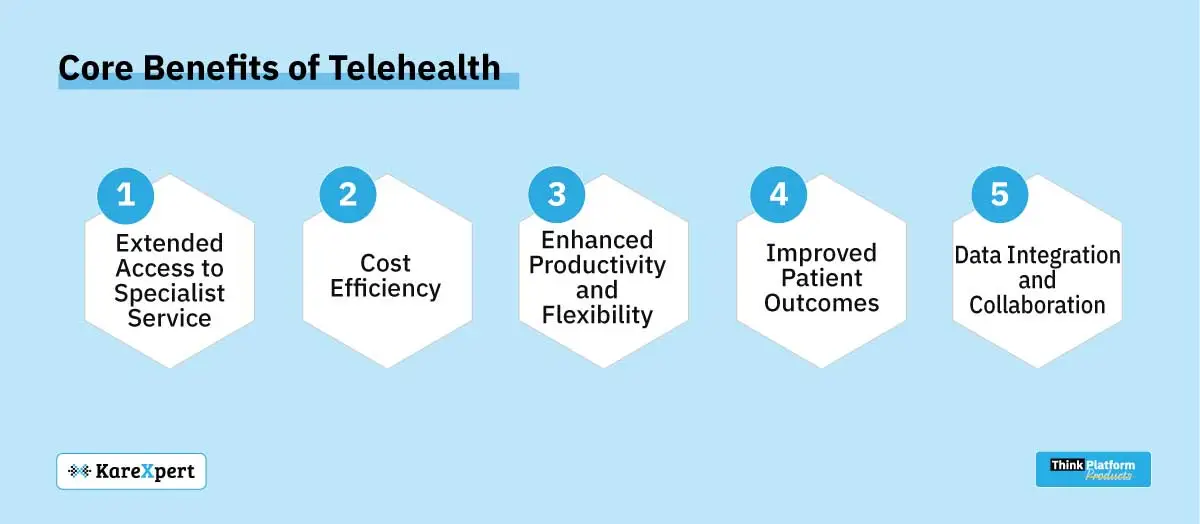Doubt Telehealth Is Right for Your Practice?Think Again: Expand Your Horizons Beyond Telemedicine

In an era where digital health is not just an option but a necessity, telehealth has emerged as a powerful tool for healthcare delivery. While some practitioners remain skeptical, believing telehealth is limited to direct patient-provider video consultations, its scope is much broader. Telehealth encompasses a range of services where the healthcare professional is not in the same location as the patient, including areas like radiology and pathology. This article explores the unexpected benefits of telehealth, illustrating why it’s an indispensable asset for modern healthcare practices.
Broadening the Definition of Telehealth
Traditionally, when we think of telehealth, mental images of doctors consulting patients via video or audio calls come to mind. However, telehealth encompasses a much wider spectrum of services. For instance, radiologists and pathologists can now interpret results and provide insights without being physically present at the lab where samples are processed. This flexibility is revolutionizing how healthcare services are delivered, making it an attractive option for hospitals looking to expand their reach and enhance service efficiency.
Core Benefits of Telehealth
1. Extended Access to Specialist Services
Telehealth breaks down geographical barriers, allowing patients in remote or underserved areas to access specialist medical services. Hospitals can now offer services like radiology interpretations and laboratory analyses from top-notch specialists who are not on-site, ensuring high-quality care regardless of location.
2. Cost Efficiency
Telehealth can significantly reduce costs associated with healthcare delivery. For healthcare facilities, it means less requirement for physical presence and specialists can operate remotely and centrally. For patients, it translates into savings on travel expenses and time, particularly for those requiring regular consultations with specialists who are not available locally.
3. Enhanced Productivity and Flexibility
By adopting telehealth, healthcare providers can see more patients in less time. Digital tools and electronic health records integrated into telehealth platforms streamline documentation and data retrieval processes. Moreover, healthcare professionals can flexibly schedule their sessions to optimize their workload, ultimately boosting overall productivity.

4. Improved Patient Outcomes
Immediate accessibility to specialist care can lead to quicker diagnoses and timely interventions. This immediacy is crucial especially in chronic condition management and emergency situations. Additionally, the continuous monitoring capabilities of telehealth platforms can lead to better management of chronic diseases, enhancing overall patient outcomes.
5. Data Integration and Collaboration
Telehealth platforms often come equipped with tools that integrate various sources of patient data into a cohesive whole. This interoperability facilitates more informed decision-making as healthcare providers have a comprehensive view of the patient’s medical history. It also fosters collaboration among different specialists, enhancing the cohesiveness of team-based care.
Real-World Applications and Success Stories
Many healthcare institutions have adopted telehealth and witnessed transformative results. For example, a rural hospital using telehealth services reported a 40% reduction in patient transfer rates for radiology services. Another clinic noted a 50% increase in patient compliance with treatment protocols through remote monitoring and consultations.
Overcoming Skepticism and Challenges
Despite its benefits, transitioning to telehealth can be daunting due to concerns about data security, patient privacy, and the potential impersonality of remote interactions. Addressing these concerns requires robust cybersecurity measures, clear communication protocols, and a focus on maintaining the human element in healthcare.
Future Trends in Telehealth
As technology advances, telehealth is poised to incorporate more sophisticated tools such as AI-driven diagnostics, augmented reality for remote surgeries, and more advanced real-time monitoring devices. These innovations will further enhance the capability, reach, and effectiveness of telehealth services.
Conclusion
Telehealth is not just an alternative; it’s becoming a fundamental aspect of modern healthcare practices. Its benefits extend beyond mere convenience, offering substantial improvements in access to care, cost efficiency, productivity, and patient outcomes. For healthcare providers still on the fence, considering telehealth is more than worth it—it’s likely essential for future success.
If you’re looking to transform your practice and expand your service capabilities, exploring the potential of telehealth with solutions like those offered by KareXpert is a strategic move that could redefine how you deliver care.
Discover the full potential of telehealth for your practice. Contact us to explore KareXpert’s innovative solutions and learn how they can transform your healthcare delivery approach.
